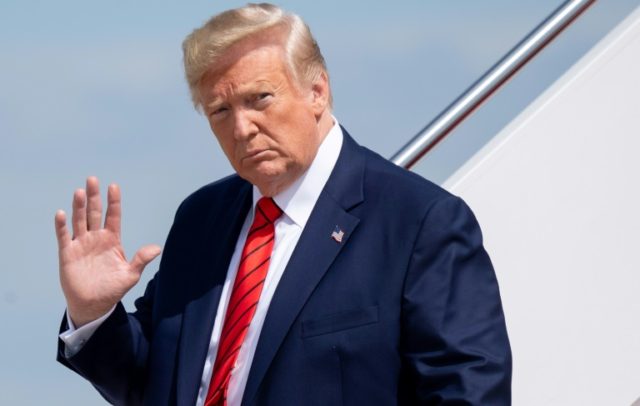Washington (AFP) – Here is a chronology of events in the Ukraine scandal, which has prompted the opening of an impeachment inquiry by the Democratic-led US House of Representatives into President Donald Trump:
– July 25: Trump-Zelensky call –
Trump holds a 30-minute telephone conversation with Ukraine’s new president Volodymyr Zelensky, a former professional comedian who was elected in May.
Earlier in July, Trump — without explanation — suspended hundreds of millions of dollars in military assistance to Ukraine which had been approved by Congress.
– August 12: Whistleblower complaint filed –
An anonymous whistleblower in the US intelligence community files an internal complaint about the Trump-Zelensky call, describing it as a matter of “urgent concern.”
– September 11: Money released –
The military assistance to Ukraine is released by the White House.
– September 24: Impeachment investigation –
Following days of reports that Trump pushed Zelensky to investigate Joe Biden, his potential Democratic rival in the 2020 presidential election, and his son Hunter, Democrats in the House of Representatives announce the opening of an impeachment inquiry for abuse of power.
– September 25: Transcript released –
The White House releases a rough transcript of the Trump-Zelensky call.
It confirms that the president repeatedly asked the Ukrainian leader to probe the Bidens and to “look into” the matter with Rudy Giuliani, Trump’s personal lawyer, and with Attorney General Bill Barr.
– September 26: Whistleblower complaint released –
The House Intelligence Committee releases the whistleblower’s complaint, which accuses Trump of “using the power of his office to solicit interference from a foreign country in the 2020 US election.”
It also accuses White House lawyers of seeking to “lock down” access to the call transcript because of its politically sensitive nature.
– October 3: Text messages emerge –
Text messages between US diplomats are released indicating the Trump administration tried to tie military aid to Ukraine to an investigation into the Bidens.
– November 13: Public hearings begin –
Following witnesses’ closed-door testimony in October, the House Intelligence Committee begins public hearings. Testifying on live television, top envoy to Ukraine William Taylor states that he was told Trump cared more about the probe into the Bidens than he did about Ukraine.
– November 15: Ex-ambassador attacked –
Marie Yovanovitch, the former US ambassador to Ukraine ousted by Trump earlier in the year, testifies under oath, stating that she felt intimidated as the president attacks her in real time via Twitter.
– November 19: White House expert testifies –
Lieutenant Colonel Alexander Vindman, a respected member of the White House National Security Council, tells Congress Trump’s call with Zelensky was “inappropriate,” stating: “It is improper for the president of the United States to demand a foreign government investigate a US citizen and a political opponent.”
– November 20: Trump ally testifies –
Gordon Sondland, the US envoy to the European Union and a Trump ally, tells lawmakers he followed Trump’s orders in seeking a “quid pro quo” deal for Ukraine to probe Biden in exchange for a White House summit.
Sondland testified that far from being a rogue operation the attempt to pressure Zelensky to announce investigations was widely known by top officials, including Vice President Mike Pence and Secretary of State Mike Pompeo.
“We followed the president’s orders,” he said.
He would not attest, however, to allegations that Trump froze $391 million in aid to add pressure on Ukraine although he came to presume that was the case.

COMMENTS
Please let us know if you're having issues with commenting.